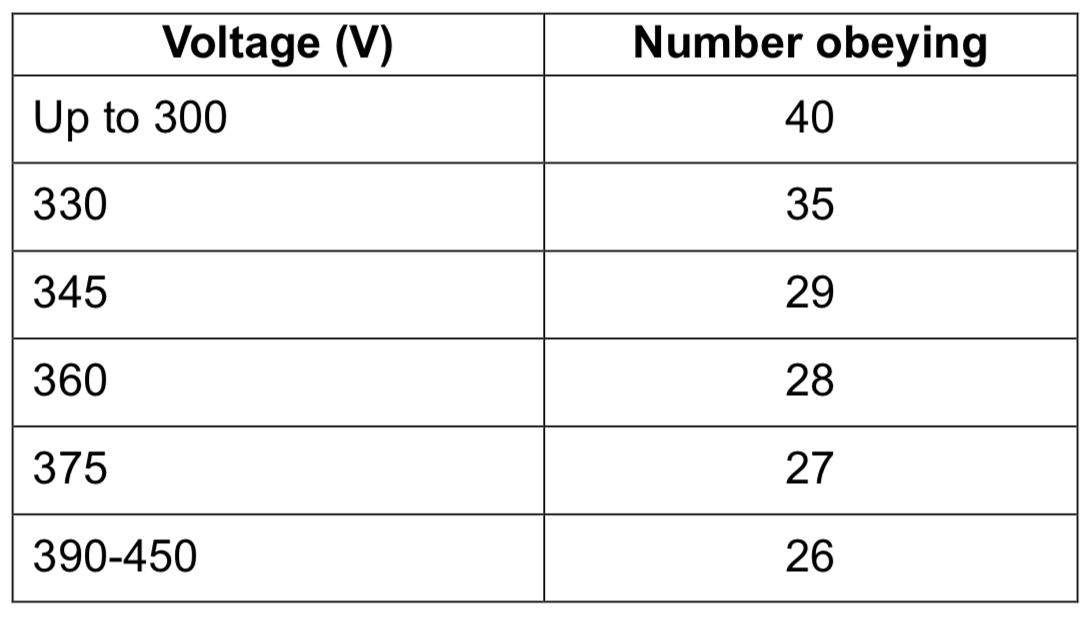Milgram (1963) Obedience to authority
1/9
There's no tags or description
Looks like no tags are added yet.
Name | Mastery | Learn | Test | Matching | Spaced |
|---|
No study sessions yet.
10 Terms
What inspired the study?
obedience
Nazi concentration camps, Germans character defect, readiness to obey without question (authoritarian personality)
Based on soda cracker experiment
What were the aims of the study?
Milgram aimed to set up an experiment with naive participants to obey authority figure in a situation causing harm to another (destructive obedience) He wanted to discover the number of participants who would obey orders in this situation and what behaviours they display to gain deeper understanding of factors influencing decisions.
What are the Procedures of the study?
Milgram advertised in a newspaper for 40 male volunteers for $4.50 aged 20-50 mix of manual, business and professional workers.
Experimenter was a 31 year old biology teacher, victim was a 47 year old accountant
Volunteer was always teacher
Shock levels 0-450 increased voltage each time question was wrong
Teachers continued giving shocks until 300V then given 4 different prompts.
Participants were interviewed when procedure completed.
What were the findings?
Both quantitative and qualitative data gained, 65% administered full 450v and all gave at least 300v, almost all stopped between 300-330v when learner went silent.

What conclusions were made?
13 elements of the situation which contributes to levels of obedience including; Yale prestige, participants reassured shocks were painful not dangerous, participants were paid so felt obligated.
How is the method evaluated?
Laboratory environment, conditions mirrored real life situations as well as experimenter in uniform symoblises authority, gradual increase in levels of shock mirrors ‘build up to’ genocides. Despite the realism lacks ecological validity, experimenter told cause pain no longer term damage, however nazis knew their actions
Ethical issues
No informed consent due to deception of aims of study and that they were being tested, psychological harm and physical harm resulted in seizures and large signs of distress reducing self esteem, participants pressured to continue and no right to withdraw.
Real life applications
High value, explains atrocities in when people commit mass numbers of military, political or community leaders
Data
Quantitative (% maximum amount of voltage administered) and Qualitative (records of behavioural responses of participants as they were obeying, disobeying) data
Sample and Sampling methods
Sample used in this study varied in age, represented a range of different occupations, widely generalisable, however Volunteer sample had been given $4.50 to take part so could have resulted in demand characteristics and exaggeration of obedience